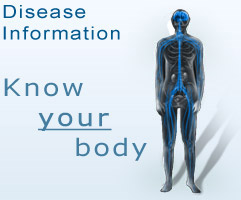Latest News
World Tuberculosis Day - 24 March 2010
World Tuberculosis (TB) Day raises awareness about the global epidemic of TB and efforts to eliminate the disease. One-third of the world's population is currently infected with TB. The Stop TB Partnership, a network of organisations and countries fighting TB, organises the Day to highlight the scope of the disease and how to prevent and cure it.
The annual event on 24 March marks the day in 1882 when Dr Robert Koch detected the cause of tuberculosis, the TB bacillus. This was a first step towards diagnosing and curing tuberculosis. WHO is working to cut TB prevalence rates and deaths by half by 2015.
Tuberculosis, or TB, is an infectious bacterial disease caused by Mycobacterium tuberculosis, which most commonly affects the lungs. It is transmitted from person to person via droplets from the throat and lungs of people with the active respiratory disease.
In healthy people, infection with Mycobacterium tuberculosis often causes no symptoms, since the person's immune system acts to "wall off" the bacteria. The symptoms of active TB of the lung are coughing, sometimes with sputum or blood, chest pains, weakness, weight loss, fever and night sweats. Tuberculosis is treatable with a six-month course of antibiotics.
Infection and transmission
- Someone in the world is newly infected with TB bacilli every second.
- Overall, one-third of the world's population is currently infected with the TB bacillus.
- 5-10% of people who are infected with TB bacilli (but who are not infected with HIV) become sick or infectious at some time during their life. People with HIV and TB infection are much more likely to develop TB.
Global and regional incidence
The World Health Organization (WHO) estimates that the largest number of new TB cases in 2005 occurred in the South-East Asia Region, which accounted for 34% of incident cases globally. However, the estimated incidence rate in sub-Saharan Africa is nearly twice that of the South-East Asia Region, at nearly 350 cases per 100 000 population.
It is estimated that 1.6 million deaths resulted from TB in 2005. Both the highest number of deaths and the highest mortality per capita are in the Africa Region. The TB epidemic in Africa grew rapidly during the 1990s, but this growth has been slowing each year, and incidence rates now appear to have stabilised or begun to fall.
In 2005, estimated per capita TB incidence was stable or falling in all six WHO regions. However, the slow decline in incidence rates per capita is offset by population growth. Consequently, the number of new cases arising each year is still increasing globally and in the WHO regions of Africa, the Eastern Mediterranean and South-East Asia.
HIV and TB
HIV and TB form a lethal combination, each speeding the other's progress. HIV weakens the immune system. Someone who is HIV-positive and infected with TB bacilli is many times more likely to become sick with TB than someone infected with TB bacilli who is HIV-negative. TB is a leading cause of death among people who are HIV-positive. In Africa, HIV is the single most important factor contributing to the increase in incidence of TB since 1990.
WHO and its international partners have formed the TB/HIV Working Group, which develops global policy on the control of HIV-related TB and advises on how those fighting against TB and HIV can work together to tackle this lethal combination. The interim policy on collaborative TB/HIV activities describes steps to create mechanisms of collaboration between TB and HIV/AIDS programmes, to reduce the burden of TB among people and reducing the burden of HIV among TB patients.
Drug-resistant TB
Until 50 years ago, there were no medicines to cure TB. Now, strains that are resistant to a single drug have been documented in every country surveyed; what is more, strains of TB resistant to all major anti-TB drugs have emerged. Drug-resistant TB is caused by inconsistent or partial treatment, when patients do not take all their medicines regularly for the required period because they start to feel better, because doctors and health workers prescribe the wrong treatment regimens, or because the drug supply is unreliable. A particularly dangerous form of drug-resistant TB is multidrug-resistant TB (MDR-TB), which is defined as the disease caused by TB bacilli resistant to at least isoniazid and rifampicin, the two most powerful anti-TB drugs. Rates of MDR-TB are high in some countries, especially in the former Soviet Union, and threaten TB control efforts.
While drug-resistant TB is generally treatable, it requires extensive chemotherapy (up to two years of treatment) with second-line anti-TB drugs which are more costly than first-line drugs, and which produce adverse drug reactions that are more severe, though manageable. Quality-assured second-line anti-TB drugs are available at reduced prices for projects approved by the Green Light Committee.
The emergence of extensively drug-resistant (XDR) TB, particularly in settings where many TB patients are also infected with HIV, poses a serious threat to TB control, and confirms the urgent need to strengthen basic TB control and to apply the new WHO guidelines for the programmatic management of drug-resistant TB.
The Stop TB Strategy, the Global Plan to Stop TB, 2006-2015 and targets for TB control
In 2006, WHO launched the new Stop TB Strategy. The core of this strategy is DOTS, the TB control approach launched by WHO in 1995. Since its launch, more than 22 million patients have been treated under DOTS-based services. The new six-point strategy builds on this success, while recognising the key challenges of TB/HIV and MDR-TB. It also responds to access, equity and quality constraints, and adopts evidence-based innovations in engaging with private health-care providers, empowering affected people and communities and helping to strengthen health systems and promote research.
The six components of the Stop TB Strategy are:
1. Pursuing high-quality DOTS expansion and enhancement.
Making high-quality services widely available and accessible to all those who need them, including the poorest and most vulnerable, requires DOTS expansion to even the remotest areas. In 2004, 183 countries (including all 22 of the high-burden countries which account for 80% of the world's TB cases) were implementing DOTS in at least part of the country.
2. Addressing TB/HIV, MDR-TB and other challenges.
Addressing TB/HIV, MDR-TB and other challenges requires much greater action and input than DOTS implementation and is essential to achieving the targets set for 2015, including the United Nations Millennium Development Goal relating to TB (Goal 6; Target 8).
3. Contributing to health system strengthening.
National TB control programmes must contribute to overall strategies to advance financing, planning, management, information and supply systems and innovative service delivery scale-up.
4. Engaging all care providers.
TB patients seek care from a wide array of public, private, corporate and voluntary health-care providers. To be able to reach all patients and ensure that they receive high-quality care, all types of health-care providers are to be engaged.
5. Empowering people with TB, and communities.
Community TB care projects have shown how people and communities can undertake some essential TB control tasks. These networks can mobilise civil societies and also ensure political support and long-term sustainability for TB control programmes.
6. Enabling and promoting research.
While current tools can control TB, improved practices and elimination will depend on new diagnostics, drugs and vaccines.
The strategy is to be implemented over the next 10 years as described in The Global Plan to Stop TB, 2006-2015. The Global Plan is a comprehensive assessment of the action and resources needed to implement the Stop TB Strategy and to achieve the following targets:
- Millennium Development Goal (MDG) 6, Target 8: Halt and begin to reverse the incidence of TB by 2015
- Targets linked to the MDGs and endorsed by the Stop TB Partnership:
- By 2005: detect at least 70% of new sputum smear-positive TB cases and cure at least 85% of these cases
- By 2015: reduce TB prevalence and death rates by 50% relative to 1990
- By 2050: eliminate TB as a public health problem (1 case per million population)
Progress towards targets
In 2005, an estimated 60% of new smear-positive cases were treated under DOTS - just short of the 70% target.
Treatment success in the 2004 DOTS cohort of 2.1 million patients was 84% on average, close to the 85% target. However, cure rates in the African and European regions were only 74%.
The 2007 WHO report Global TB Control concluded that both the 2005 targets were met by the Western Pacific Region, and by 26 individual countries (including 3 of the 22 high-burden countries: China, the Philippines and Vietnam).
The global TB incidence rate had probably peaked in 2005, and if the Stop TB Strategy is implemented as set out in the Global Plan, the resulting improvements in TB control should halve prevalence and death rates in all regions except Africa and Eastern Europe by 2015.
Sourced: 24/03/2010 from www.who.int
 TransmedBanner4.jpg)

